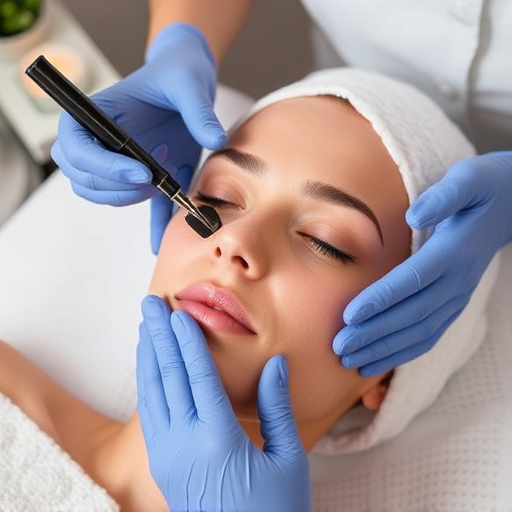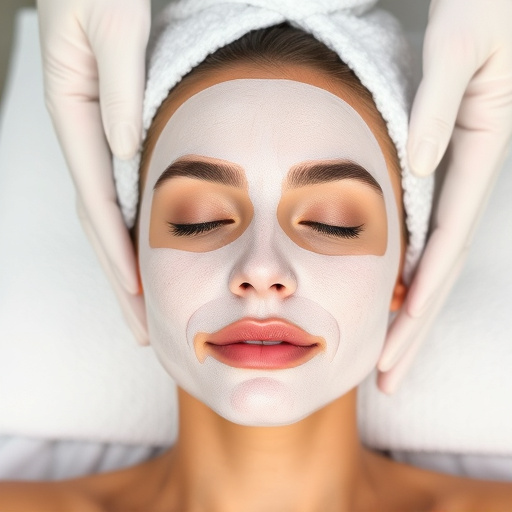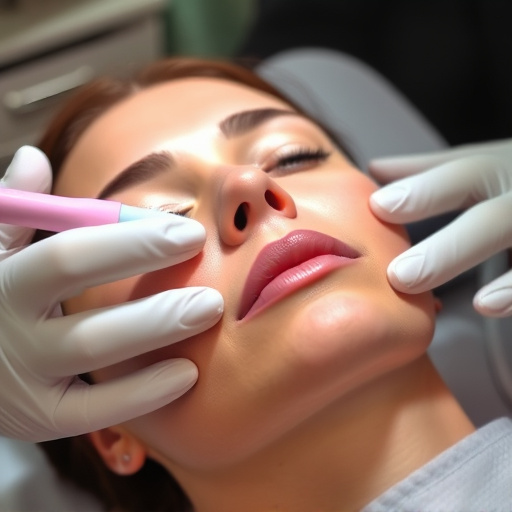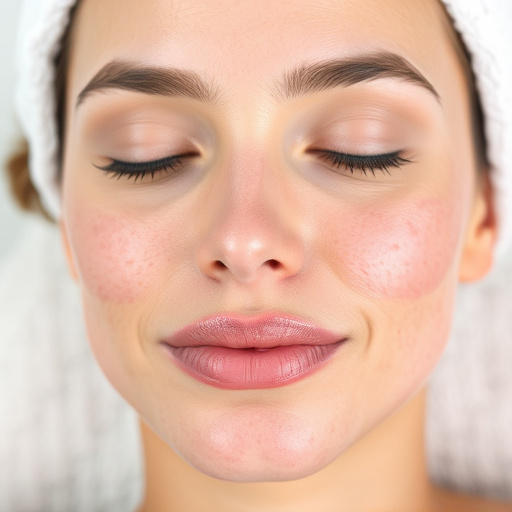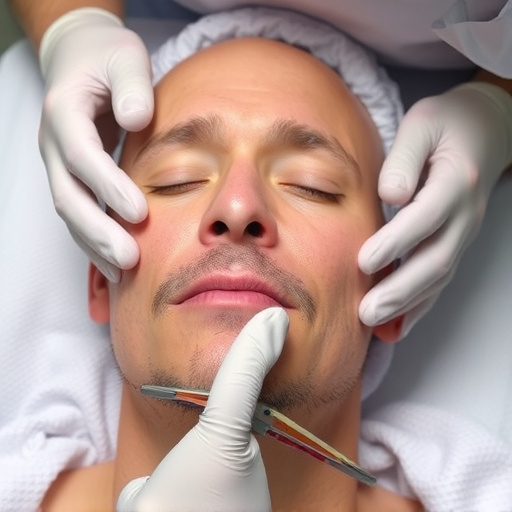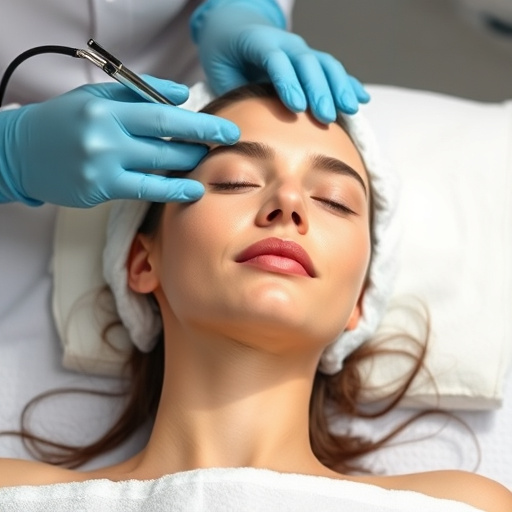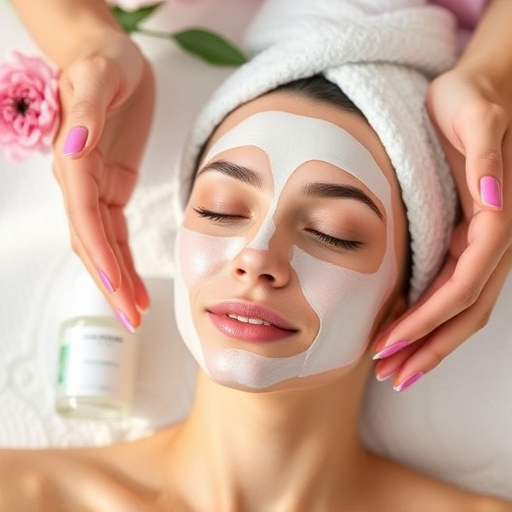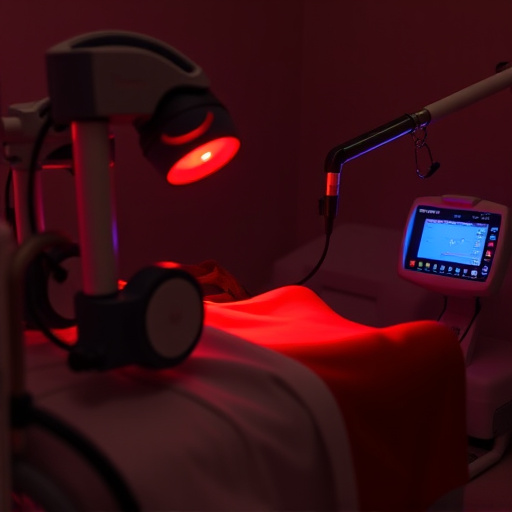Rosacea is a chronic skin condition with redness, puffy blood vessels, and bumps, caused by genetic, environmental, and vascular factors. Manage triggers, seek professional help for tailored solutions like skin tightening. Topical treatments, laser therapy, and holistic approaches combining gentle skincare, sun protection, diet adjustments, and hydration are effective rosacea treatment methods.
Rosacea is a chronic skin condition characterized by redness, bumps, and facial flushing. Understanding its causes and triggers is the first step towards effective management. This article explores comprehensive rosacea treatment options, from topical medications that soothe irritated skin to lifestyle changes for long-term relief. Discover practical strategies to reclaim your skin’s health and reduce rosacea symptoms with these proven treatments.
- Understanding Rosacea: Causes and Triggers
- Topical Treatments for Soothing Skin
- Lifestyle Changes for Long-Term Relief
Understanding Rosacea: Causes and Triggers
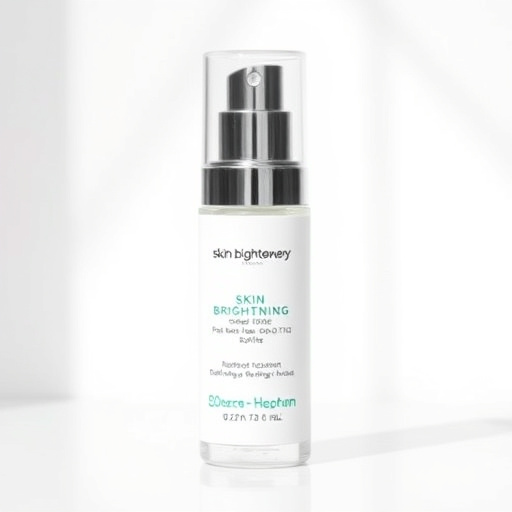
Rosacea is a chronic skin condition characterized by redness, small puffy blood vessels, and sometimes small bumps on the face. It’s important to understand that while it may seem similar to acne, rosacea is distinct and requires specific treatment approaches. The exact cause of rosacea is not fully understood, but several factors contribute to its development. These include genetic predisposition, certain environmental triggers, and changes in blood vessels near the skin’s surface.
Common triggers for rosacea flare-ups include sun exposure, hot or cold temperatures, specific foods and beverages (like spicy meals or alcoholic drinks), stress, and even certain types of makeup or skincare products. Identifying and managing these triggers is a crucial aspect of rosacea treatment. Additionally, seeking professional help from dermatologists who specialize in acne treatments can offer tailored solutions including skin tightening techniques and pore refinement procedures for those seeking advanced rosacea management.
Topical Treatments for Soothing Skin

Rosacea is a skin condition that can be managed with various topical treatments designed to soothe and calm inflamed skin. Many over-the-counter options are available, including creams and gels containing ingredients like glycerin and niacinamide, which help hydrate and reduce redness. For more severe cases, prescription topicals such as retinoids or sulfur-based preparations may be recommended by dermatologists. These treatments work to minimize symptoms by reducing skin inflammation and preventing the clogging of pores, a common factor in rosacea flare-ups.
In addition to topical applications, non-surgical procedures like laser therapy have gained popularity as effective rosacea treatments. These targeted interventions can help reduce facial redness and vascular abnormalities associated with the condition. Unlike body contouring procedures, which focus on shaping and defining specific areas of the body, rosacea treatments aim to soothe and restore skin health, providing long-lasting relief from symptoms and improving overall skin texture and appearance.
Lifestyle Changes for Long-Term Relief

While topical medications and professional procedures offer immediate relief for rosacea symptoms, adopting a holistic approach with lifestyle changes can lead to long-term success in managing this condition. Incorporating gentle skin care practices, such as using mild, non-irritating products and avoiding harsh cleansers, can help calm inflammation and prevent further irritation. Additionally, protecting your skin from the sun’s harmful UV rays with regular sunscreen use is crucial, as sunlight can trigger flare-ups and exacerbate existing rosacea symptoms like redness and enlarged pores.
Dietary adjustments play a significant role in rosacea treatment, too. Reducing consumption of spicy foods, alcohol, and caffeine may help minimize vascular reactions that contribute to the appearance of redness and broken blood vessels. Staying hydrated by drinking plenty of water can also support skin health and promote overall circulation, potentially reducing the visibility of enlarged pores (pore refinement) and fine lines (wrinkle reduction).
Rosacea can be a challenging skin condition to manage, but with the right approach, effective rosacea treatment is achievable. By understanding the causes and triggers, exploring suitable topical treatments, and adopting beneficial lifestyle changes, individuals can find long-term relief and restore their skin’s health and appearance. Remember, consistency and patience are key when it comes to managing rosacea, so don’t hesitate to try various strategies to discover what works best for your unique skin.

